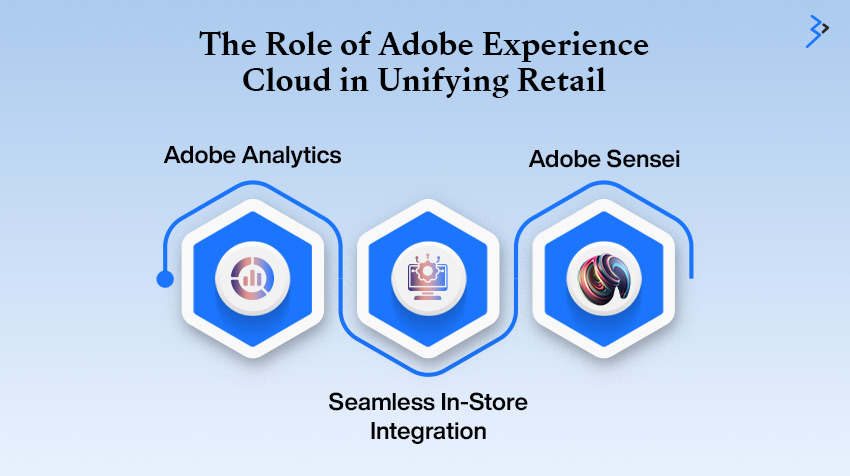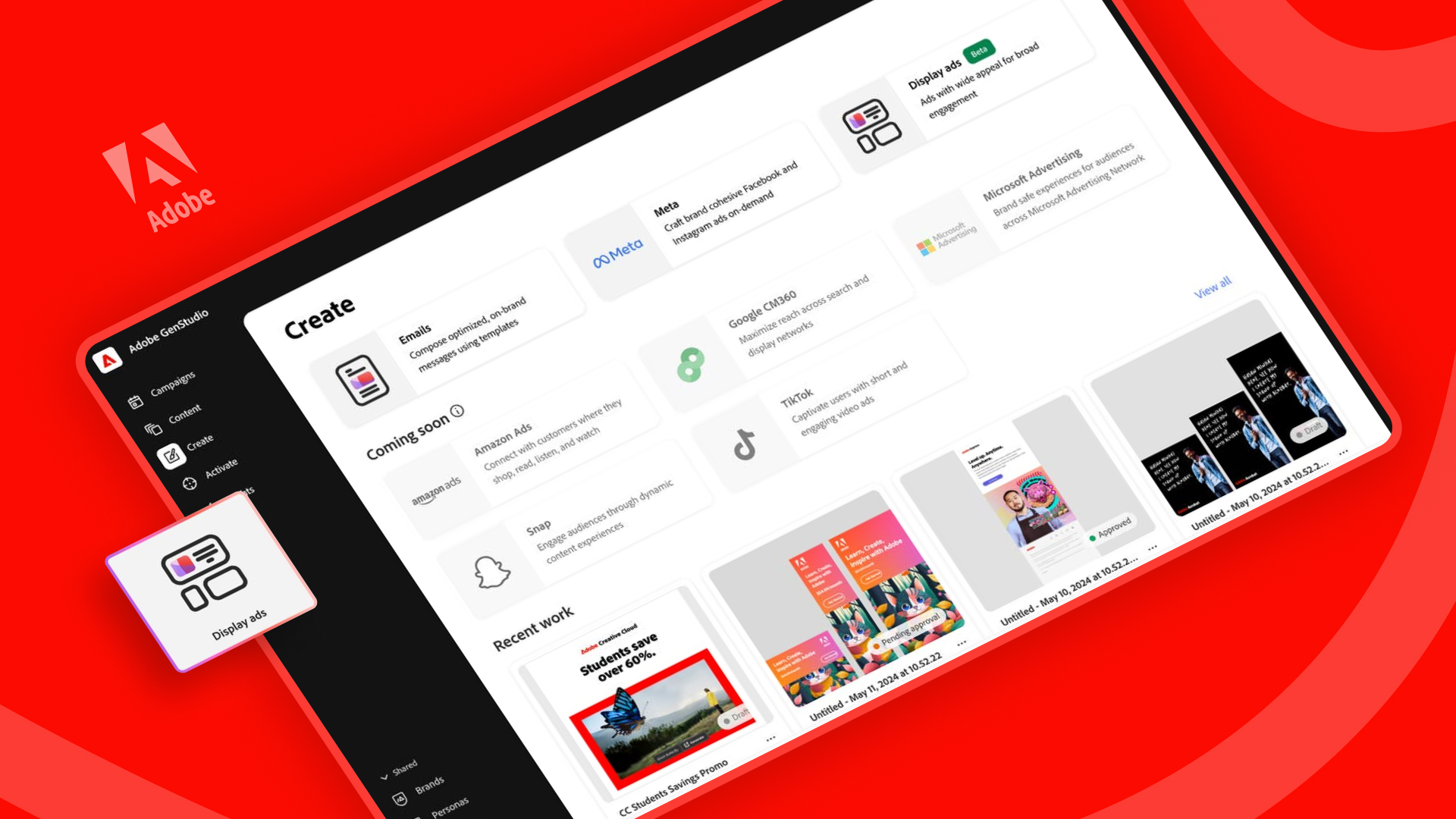The retailing world is evolving. Gone are the days of a simple brick-and-mortar store or an e-commerce site. Customers of today do not view channels or see a brand. They demand a personalized, consistent, smooth journey. Whether you are on their phone, laptop, or walking into a physical business, this journey ought to be possible. That has become the new reality of the integrated retail business.
This cohesion is not very easy to achieve; most retailers work with disjointed systems. Such data silos do not help them know their customers well. They miss the most important chances to develop loyalty and motivate sales. Here, a strong multifunctional platform is needed. The complete solution to this challenge is the Adobe Experience Cloud, which, with its innovative tools, offers a way to ensure retailers meet and do more to help contemporary shoppers be satisfied.
The Evolution of Retail: From Omnichannel to Unified Commerce
We have to look at the past to gain insight into the future. Omnichannel retailing was developed to offer uniformity in the experience of various channels. For example, a customer may check a product online and purchase it at a store. This was a positive move. Yet, it was frequently just a sign that the systems, which were at the roots of it, remained independent. The customer service center, online, and physical stores often have different software. This brought about discontinuous data and a scattered perspective on the customer.
Unified commerce is the future of retailing strategy. It not only goes beyond the multiple channels, but also unifies all the systems online, in stores, inventory, and customer data into one centralized system. With this method, the data silo is eliminated. It generates one source of truth in whatever business activities take place. A retailer can get a complete picture of the business and the customer when all the data is consolidated. In a study, implementing a unified commerce platform had an average increase in sales growth rate of 8.9% among retailers that switched to it after operating on an omnichannel model. (Source: Shopify). This highlights the immense value of this integrated approach.
Read More – Integrating Adobe Commerce Cloud with Adobe Experience Manager
The Modern Customer’s Demand for Experience
Today’s consumer is informed and empowered. Their expectations have never been higher. They demand more than just a transaction~ they want an experience. 91% of consumers are likely to shop with brands that provide relevant offers and recommendations (Source: Accenture). This demonstrates the critical role of personalization in modern retail.
Furthermore, a poor customer experience is a significant risk. Research shows that 89% of consumers will switch to a competitor after just one bad experience (Source: Zendesk).
This underscores the importance of a frictionless and consistent journey.
Even in our digital-first world, physical stores remain vital. A significant portion of retail sales still occurs in brick-and-mortar locations. A 2025 forecast projects that approximately 80.8% of retail sales will happen in physical stores (Source: Capital One Shopping). The customer journey is rarely purely digital or physical; it’s a fluid blend of both.
The Role of Adobe Experience Cloud in Unifying Retail

Adobe Experience Cloud offers a robust technology stack that entails real unified commerce. It is not a set of tools; it is an integrated platform that lets it deconstruct the walls between channels. Its segments effectively complement each other to present a single vision of the customer and the company. Adobe Commerce stands in the center of the platform. This is a massively competitive e-commerce system where retailers can make outstanding online shops. It is the means through which all product information is centralized, including pricing and inventory management, and all online transactions run through this system.
- Adobe Analytics: This consolidates customer data. It captures and measures each customer interaction, both online and in person. This enables the retailers to design detailed customer profiles. They can know what customers visit online, what they purchase in brick and mortar, and how they use marketing campaigns. Personalization is based on this one 360-degree view.
- Adobe Sensei: It is the robust AI and machine-learning engine by Adobe. It breaks down the vast amount of data derived from all channels. It drives intelligent functions such as recommendations on recommended products. It will be able to forecast customer behavior. It also assists in automating marketing campaigns to provide the correct message at the correct time. The retail market AI is estimated to be in billions regarding the nature of its transformative opportunity (Source: Grand View Research).

- Seamless In-Store Integration: The Adobe platform allows deep integration with a retailer’s Point-of-Sale (POS) systems. This means a customer can be identified at the checkout counter. The sales associate can see their online purchase history. They can also view their loyalty status and recommend relevant products. This bridge between digital and physical is crucial.
Read More – Unlocking Business Growth with Adobe Experience Cloud
Real-World Applications of a Unified Approach

The benefits of a unified commerce strategy, powered by Adobe Experience Cloud, are not just theoretical. They translate into tangible improvements across the entire retail operation.
- Better Ordering: Buy Online, Pick Up In-Store (BOPIS) is one of the most trendy contemporary retail services. A uniform platform will enable a retailer to offer uninterrupted BOPIS. The inventory will be visible to customers online in real time. They know that the product is available in the retail outlets of their preferred shop. The system automatically allocates the items and alerts the store staff. This is an efficient process that puts less friction on the customer. Capital One Shopping has surveyed that 85 percent of BOPIS customers perform another transaction while picking up an order at the store. (Source: Capital One Shopping).
- Real-Time Inventory Visibility: Out-of-stocks often cause customer frustration and lost sales. Using a shared platform, inventory visibility in every location is possible in real time. Customers can see whether a product is in a local store and avoid traveling to the store. This forestalls disappointment, and customer satisfaction is enhanced.
- Individualized Marketing: Marketing campaigns are more effective when using one customer profile. A retailer can communicate with a customer through a specific email. The customer’s online shopping history can be used by including the products that they have regularly viewed. The email can also include a coupon for one of the products that they have purchased at the store this past month. Such a degree of personalization makes people engage and raises conversion levels.
Read More – Optimizing the Mobile Experience on Your Adobe Commerce Cloud Store
The Strategic Advantage
Implementing a unified commerce strategy with a platform like Adobe Experience Cloud is more than a technical project. It is a strategic decision. It positions a business for sustained growth and success in a highly competitive market. The key advantages are clear.
First, it leads to increased sales and revenue. The enhanced customer experience and personalized offers lead to higher conversion rates and larger basket sizes. The ability to offer services like BOPIS creates new sales opportunities.
Second, it fosters customer loyalty. Customers who feel a brand truly understands them are more likely to return. A frictionless experience builds trust and strengthens the relationship.
Third, it drives operational efficiency. A single, integrated platform simplifies management, reduces manual work, and streamlines processes. This leads to cost savings and frees up resources for innovation.
Finally, it provides powerful data-driven insights. The centralized data gives retailers a complete picture of their business, enabling them to make smarter decisions about everything from inventory and marketing to store layouts and staffing.
The Future is Unified
Retail is an unpredictable place to be in the future. New technologies are being discovered, such as augmented reality and conversational commerce. An integrated commerce platform can be scalable. It enables a business to incorporate such changes and adjust to change without hesitation. It is not showing up in trends. It is all about establishing a foundation that is preparation for the future. Retailing is changing every day. It is not possible to stand still. The companies have to adopt a single-store environment. It is the only manner to provide the smooth, individual experiences that contemporary customers need. It is the door to success in the new world of retailing.
It enables companies to transform their interactions into a profitable aspect of an integrated and satisfying customer experience. The future is present, and it is incorporated. Brainvire happens to be the expert in creating these next-generational retail experiences. We are experts in Adobe Commerce implementation and optimization, as well as the implementation of Adobe Experience Manager Services. We assist companies in getting the maximum out of a unified commerce strategy. We ensure that we develop solutions that address the current needs and equip our clients with what to expect tomorrow.
FAQs:-
While omnichannel links multiple systems, unified commerce integrates all systems—online, in-store, and inventory—into a single, centralized platform, providing a single source of truth.
It enhances the customer journey by creating a single customer profile from all touchpoints. This allows for personalized recommendations and a consistent experience across all channels.
The most prominent example is Buy Online, Pick Up In-Store (BOPIS). A unified platform enables real-time inventory visibility, making this service possible and seamless.
It improves operational efficiency by streamlining processes and providing data-driven insights from a single source, which helps with better decision-making.
Yes, a unified model is built for flexibility and scalability. It allows a business to easily adopt new technologies and adapt to changing customer expectations, positioning it for long-term growth.
Related Articles
-
From RFP to Go-Live: How Enterprises Implement AEM Successfully
Imagine a world where your marketing team launches 65 hyper-personalized campaign variations in a single week, achieving a $1.2 million increase in Q3 revenue simply because your content could adapt
-
Maximize Creativity with Adobe Gen: The Ultimate Guide
The emergence of generative AI is fundamentally transforming the marketing landscape by empowering brands to craft highly personalized and effective campaigns at an unmatched scale. A leading player in this
-
Streamlining Digital Asset Management with AEM Assets
Summary With 89% of marketers crediting personalization in their campaigns for positive ROI, it has become the key to success for many growing businesses. This is where organizations today are




